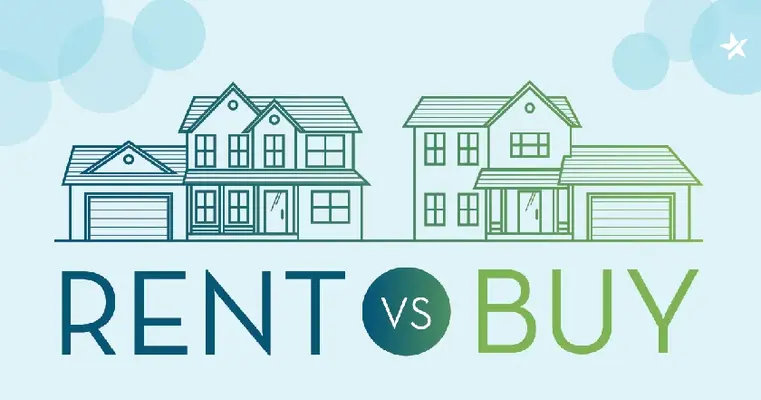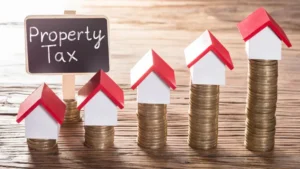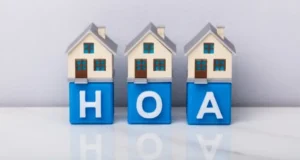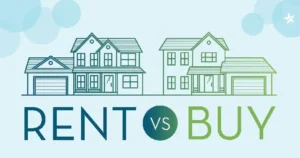This is an in-depth look at why renting has become significantly more affordable than buying in 2025.
With shifting economic conditions, many prospective homeowners face soaring property prices and high mortgage rates, while renters often benefit from stable rent payments and less financial risk.
In this article, we’ll explore the factors fueling this affordability gap, including rising investor activity, regional variations in home prices, and the impact of inflation on everyday housing costs. By understanding these trends, you can make an informed decision on whether renting or buying is best for your budget and long-term goals and personal lifestyle priorities.
What Is the Affordability Gap in the Housing Market 2025?
In the housing market of 2025, we are witnessing the largest affordability gap between renting and buying ever recorded. According to recent data from Bankrate, the average renter needs an annual income of around $64,000 to cover median rent, while a prospective homebuyer requires $116,000 or more to afford monthly mortgage payments on a median-priced home.
Renting vs. Buying has always involved weighing flexibility and lower upfront costs against the long-term benefits of homeownership.
However, high mortgage rates, soaring home prices, and modest wage growth in many regions have pushed the gap between renting and buying to new heights, making renting 50% more affordable for a significant portion of the population.
Key Factors Behind the Rent vs. Buy Disparity
1. Rising Home Prices
- Nationwide Increase: The median U.S. home price reached $425,583 in early 2025, up 3.7% from the previous year (Source: Business Insider).
- Low Inventory: Tight inventory across many metro areas keeps prices high, with limited new construction failing to meet demand.
Regional Variations:
- California: Median home prices in California often exceed $600,000, making the rent vs. buy dilemma especially pronounced.
- Austin: Once considered an affordable Texan city, Austin’s rising property values—estimated at over $450,000 for a median home—have priced out many first-time buyers.
2. High Mortgage Rates
- Current Rate Levels: 30-year fixed mortgage rates hover around 7% in 2025 (Source: Visual Capitalist).
- Monthly Payment Impact: Even a small increase in interest rates can significantly raise monthly mortgage payments, making buying less affordable.
- Credit Requirements: Higher rates often come with stricter lending standards, further limiting the pool of potential homebuyers.
3. Stable or Declining Rents
- Slight Declines: Rents in some areas have stabilized or dipped thanks to new multi-family developments. Analysts project an average 0.1% rent decrease in 2025.
- Rental Supply: Increased apartment construction has boosted rental inventory, preventing steep rent hikes in many cities.
4. Impact of Inflation
- Rising Cost of Living: Inflation affects everything from groceries to utility bills. Although wages have seen incremental increases, they often struggle to keep pace with overall inflation rates.
- Housing-Specific Inflation: Construction material costs and land prices also rise with inflation, pushing home prices even higher.
- Renter Advantage: Renters are more insulated from unexpected inflation spikes in property taxes and maintenance costs—burdens typically borne by homeowners.
5. Role of Investor Activity
- Investor Competition: Large real estate investment firms and individual investors alike buy up properties in bulk, reducing the supply available to everyday buyers.
- Short-Term Rentals: Platforms like Airbnb have encouraged investment in second homes, driving up prices in popular urban and vacation markets.
- Effect on Affordability: By tightening supply, investor activity contributes to higher home prices, widening the affordability gap between renting vs. buying.
Is It Cheaper to Rent or Buy a House? A Cost Breakdown
Below are two HTML tables comparing the average monthly costs and annual income requirements for renting and buying. These tables are structured to potentially appear as featured snippets on Google.
Detailed Average Monthly Costs
| Housing Option | Base Payment (Rent/Mortgage) | Insurance (Renters/Homeowners) | Property Taxes (If Applicable) | Total Monthly Approx. Cost |
|---|---|---|---|---|
| Renting | $1,950 | $50 (Renters Insurance) | N/A | $2,000 |
| Buying | $2,188 (Principal + Interest) | $230 (Homeowners Insurance) | $350 (Avg. Monthly) | $2,768 |
Note: These figures are approximate national averages that may vary by location, credit score, property type, and lender. “Renting” cost includes base rent plus renters insurance; “Buying” cost includes typical mortgage principal and interest, homeowners insurance, and estimated property taxes. Sources: Bankrate, Newsweek.
Detailed Annual Income Required
| Housing Option | Approx. Monthly Housing Cost | Approx. Annual Housing Cost | 30% Income Guideline | Required Annual Gross Income |
|---|---|---|---|---|
| Renting | $2,000 | $24,000 | 30% of Income | $80,000 |
| (Alternate) | $1,600 | $19,200 | 30% of Income | $64,000 |
| Buying | $2,768 | $33,216 | 30% of Income | $110,720 to ~$116,000 |
Note: Annual income requirements assume that housing costs do not exceed 30% of gross monthly income. Actual qualifications may vary based on debt-to-income ratios, down payment amounts, and local mortgage underwriting standards. Sources: Bankrate, VTDigger. Figures approximate national averages; actual requirements vary by region.
Additional Costs to Consider
Renting
- Security deposit (usually 1–2 months’ rent)
- Renters’ insurance (typically $15–$30/month)
- Potential annual rent increases
Buying
- Down payment (7–20% of purchase price)
- Closing costs (2–5% of purchase price)
- Property taxes, homeowners insurance, and HOA fees
- Maintenance and repair expenses
How Much Do I Need to Make to Buy a House in California, Austin, and More
One of the most common questions people ask is: “How much do I need to make to buy a house in [city/state]?” Below are general estimates:
California:
- Median home price in many parts of California can exceed $600,000.
- At current interest rates (around 7%), you might need an annual income of $140,000–$160,000 to comfortably cover mortgage payments, property taxes, and insurance.
Austin, Texas:
- Median home price is around $450,000–$480,000.
- Annual income required typically $95,000–$110,000, depending on your interest rate and debt-to-income ratio.
Northeast (e.g., New York Metro):
- Median home price can range from $550,000 to well over $700,000 in high-demand areas.
- Annual income requirements often $130,000 and above to manage monthly costs.
Always consult local listings and real estate professionals, as figures vary widely by neighborhood and property type.
Why Is Renting More Affordable Than Buying Right Now?
Renting is more affordable than buying primarily due to rising home prices, higher mortgage rates, and relatively stable rents. Renters need less upfront cash and face fewer monthly financial obligations compared to homeowners burdened by mortgage payments, property taxes, and maintenance costs.
Pros and Cons: Renting vs. Buying
Pros of Renting
- Lower Upfront Costs: Typically just a security deposit.
- Flexibility: Easy to relocate without selling a property.
- No Maintenance: Landlords handle repairs and upkeep.
- Predictable Expenses: Less risk of surprise repairs.
Cons of Renting
- No Equity: Your monthly payments don’t build ownership.
- Possible Rent Increases: Landlords can raise rent annually.
- Limited Customization: Restrictions on renovations or décor.
Pros of Buying
- Equity Building: Monthly mortgage payments contribute to ownership.
- Home Value Appreciation: Potential return on investment over time.
- Tax Benefits: Mortgage interest and property tax deductions.
- Stability: Fixed-rate mortgages can lock in monthly payments.
Cons of Buying
- High Upfront Costs: Down payments, closing fees, and more.
- Maintenance and Repairs: Homeowners shoulder these expenses.
- Less Mobility: Selling a home can be time-consuming and costly.
- Market Uncertainty: Housing values can fluctuate.
When Does Buying Make Financial Sense?
Expert Quote:
“Buying a home pays off best when you’re ready to stay put for five to seven years, build equity gradually, and absorb potential market fluctuations.” – Dr. Samantha Lee, Housing Economist at RealEstateAnalytics™
Consider buying if:
- You have a stable job and plan to live in the same area long-term.
- You can afford a solid down payment (10–20%).
- You’re prepared for property taxes, insurance, and ongoing maintenance.
In expensive or fast-changing markets, renting might remain more practical until rates drop or personal finances improve.
Frequently Asked Questions
Why is renting more affordable than buying right now?
Because of high mortgage rates and elevated home prices, monthly mortgage payments are significantly more than average rents.
Is it cheaper to rent or buy a house in 2025?
Renting vs. buying in 2025 generally favors renting for short-term affordability, though local market conditions vary.
How do I know if I should rent or buy?
Factor in income stability, location, job security, and how long you plan to stay. Buying is often more cost-effective over 5–7+ years.
How much do I need to make to buy a house in California?
In high-cost areas, you may need an annual income of $140,000–$160,000 to afford a median-priced home with current mortgage rates.
What about housing affordability in Austin?
With median prices around $450,000–$480,000, you generally need $95,000–$110,000 in annual income to buy comfortably.
Do homeowners build more wealth than renters?
Historically, homeownership can lead to equity growth, but renters can also invest the money they save in stocks, bonds, or other assets.
Are there any tax benefits for renting?
Renters typically have fewer direct tax benefits, but they often face lower overall monthly housing costs and can invest the difference.
Will home prices go down soon?
Market predictions vary. Changes depend on interest rates, housing supply, and broader economic conditions.
What role do investors play in housing affordability?
Investor activity reduces the availability of affordable homes and can drive up prices, increasing the affordability gap.
Should I wait for interest rates to drop before buying?
Waiting can be a gamble. Focus on your personal finances and market readiness rather than trying to time the market.
The Bottom Line
In the housing market 2025, renting is often 50% more affordable than buying, with lower monthly costs and reduced upfront expenses. While homeowners can benefit from equity and tax advantages, today’s high mortgage rates, rising home prices, and investor-driven competition make renting an increasingly attractive option—especially for those who value flexibility or are uncertain about their long-term plans.
Your Next Steps:
- Assess Your Finances: Calculate your potential mortgage payment vs. current rent.
- Research Your Local Market: Look up median home prices, rental costs, and job stability in your area.
- Seek Expert Advice: Talk to a financial advisor or real estate professional for personalized guidance.















